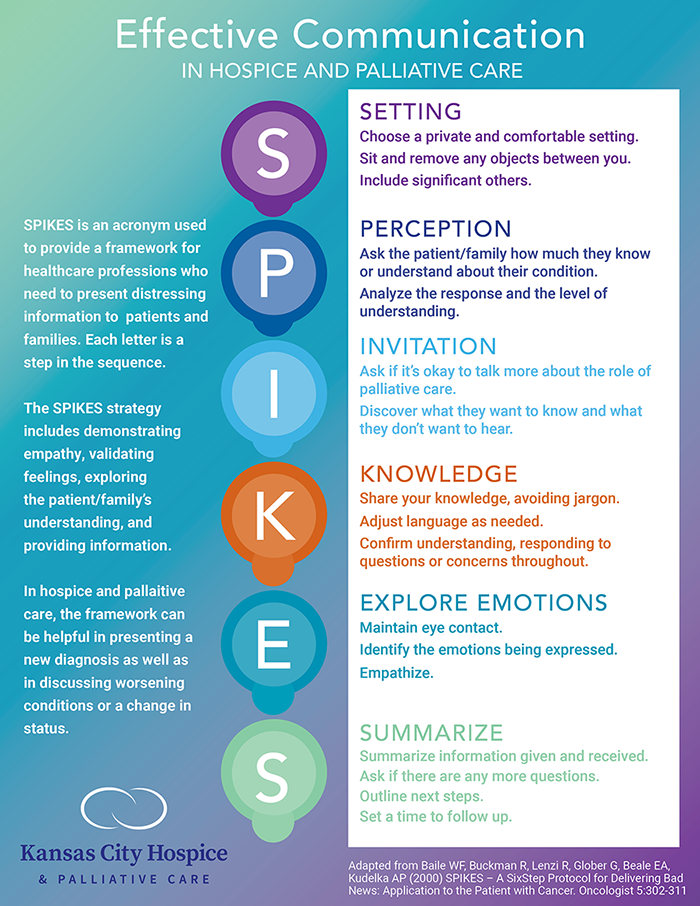 By Pamela Harris, MD, FAAPMR, FAAHPM
By Pamela Harris, MD, FAAPMR, FAAHPM
Director of Medical Programs at Kansas City Hospice & Palliative Care
Effective communication in hospice and palliative care is something every caregiver strives to achieve. My fellow physicians, nurses, nursing assistants, social workers, therapists, and even chaplains have to have the best possible communications skills. We find ourselves speaking not just with patients, but with their family members, loved ones, friends, clergy, and more.
Whether early in the illness or as conditions change, we need to be clear yet empathetic. Each person facing a life-limiting illness is unique. They have their own feelings and beliefs to guide them and my goal is to meet them there. It can be more complicated when loved ones disagree or push for their own needs. But, I always come back to the person for whom I’m caring.
We use many acronyms and mnemonics in medicine, and we have to resist the urge to speak quickly with medical jargon. Each person needs explanations that they can comprehend and internalize.
There is a particular acronym I want to share with you today. The SPIKES protocol is used as a framework for healthcare professionals to use when presenting distressing information. I find it works well in many situations I encounter, not all of them medical.
S if for Setting
- Choose a private and comfortable setting.
- Sit and remove any objects between you.
- Include significant others.
P is for Perception
- Ask the patient/family how much they know or understand about their condition.
- Analyze the response and the level of understanding.
I is for Invitation
- Ask if it’s okay to talk more about the role of palliative care.
- Discover what they want to know and what they don’t want to hear.
K is for Knowledge
- Share your knowledge, avoiding jargon.
- Adjust language as needed.
- Confirm understanding, responding to questions or concerns throughout.
E is for Explore Emotions
- Maintain eye contact.
- Identify the emotions being expressed.
- Empathize.
S is for Summarize
- Summarize information given and received.
- Ask if there are any more questions.
- Outline next steps.
- Set a time to follow up.
Effective Communication in Hospice & Palliative Care, adapted from Baile WF, Buckman R, Lenzi R, Glober G, Beale EA, Kudelka AP (2000) SPIKES – A Six Step Protocol for Delivering Bad News: Application to the Patient with Cancer. Oncologist 5:302-311
About Us

Posted in Hospice Care, Stories of Support, Voices of Care


Need information regarding if Lake Lotawana is in your service area. 816-517-8515
Carol, sorry for the delayed response. Please contact our main office at 816.363.2600 to receive full details on our program. Thank you.
Thank you, Dr. Pam! Your communication was perfect for our family and we appreciate how you cared.